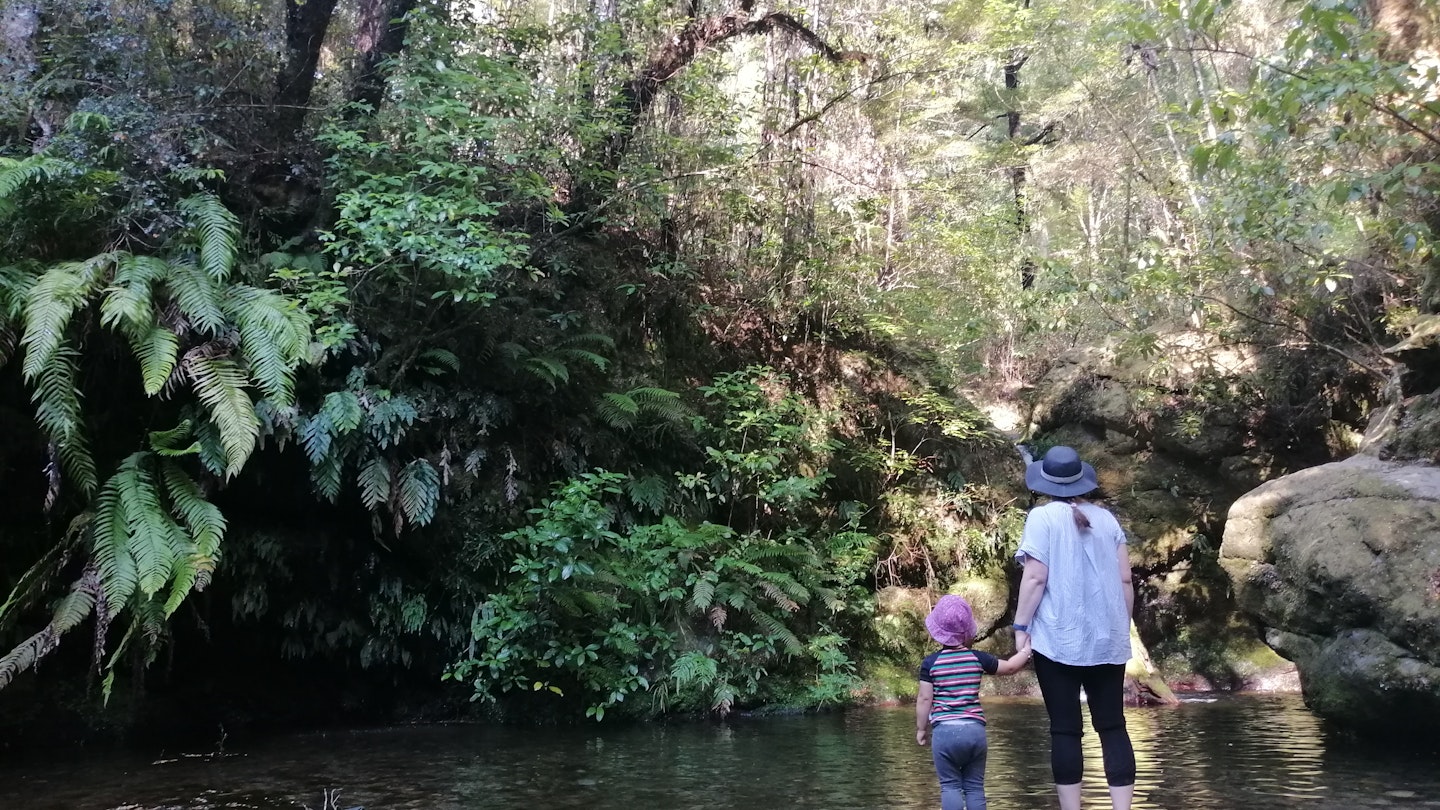Discovering Toddler-Friendly Hikes in New Zealand
Avid hiker Elen Turner is introducing her daughter to the great outdoors by bringing her on a selection of New Zealand’s stunning toddler-friendly hikes. Here, she shares valuable advice to parents eager to introduce their young children to nature.

Research shows that spending time outdoors, especially among trees, is vital for brain development in children and emotional wellbeing for all ages. The first three years of a child’s life are critical for shaping development. Therefore, I feel fortunate to introduce my two-and-a-half-year-old daughter to the beauty of nature through numerous short hikes in New Zealand.
As a dedicated hiker, I wanted to maintain my love for hiking after becoming a parent. Nevertheless, parents of toddlers understand the unique challenges of traveling with little ones. Toddlers, unlike infants, are less portable and often reluctant to sleep, alongside their strong desire for independence. Consequently, hiking with a toddler can require patience and flexibility.

One of the many joyful aspects of hiking with toddlers is their fascination with the small details that adults often overlook. For instance, during one hike to a beautiful waterfall, my daughter was captivated by an earthworm wriggling along the trail, a detail I would have missed. She notices patterns like white stripes on black rocks that resemble zebras, and she finds cicada skins perched on nearby tree trunks. Such simple hikes provide her with a spectrum of experiences that delight me as a parent.
We prefer to choose day hikes, allowing us to drive home afterward or camp at a serviced site. New Zealand boasts an extensive network of Department of Conservation (DOC) huts and campsites, which enable families interested in longer hikes to secure accommodations with minimal hassle. While basic campsites are free, families with toddlers might find serviced campsites more comfortable, which do require a fee.
It’s crucial to remember that when hiking in some national parks in New Zealand, all rubbish must be carried out, even when staying at campsites within national park boundaries. Parents of toddlers need to account for any diapers and associated waste, making it necessary to plan accordingly for multi-day hikes with little ones.
Marlborough Sounds
The Marlborough Sounds are known for their renowned Queen Charlotte Track, which spans three to five days. However, there are also numerous shorter trails ideal for families with toddlers. The area boasts a 150-kilometre coastline with enticing bays and small campsites. Our favorite spots include the serviced DOC campsites at Momorangi Bay and Pelorus Bridge, both featuring excellent facilities and even children’s playgrounds.
While at Pelorus Bridge Scenic Reserve, families can enjoy an easy two-hour return hike to some stunning waterfalls. Toddlers may need to be carried in a hiking pack due to uneven and hilly terrain, as well as the drop-offs near the river. The final waterfall culminates in a refreshing pool, perfect for cooling off on hot days.
Abel Tasman National Park
Abel Tasman National Park, New Zealand’s smallest national park, is incredibly popular, making it a fantastic choice for families with toddlers. The park is conveniently accessible from both Nelson and Motueka. There are also ferries and water taxis available for easy transportation along the coast. For those looking to do an overnight hike, gear can be picked up and transported for you, including essentials like diapers.
The park features stunning beaches, boasting some of the finest sandy coves and turquoise waters. These natural attractions are perfect for little ones who enjoy splashing around. While many trails are suitable for toddlers, a hiking pack is recommended for some of the hilly sections.

Nelson Lakes National Park
The Nelson Lakes National Park, especially around St. Arnaud and Lake Rotoiti, is perfect for families with active toddlers. Short, flat trails extend from the lakeshore, leading to pebble-strewn beaches that are ideal for little ones. Expect to spend as much time skimming stones as you do hiking. Additionally, water taxis are available during summer for those who prefer longer hikes.
Ensure to bring insect repellent, as the Nelson Lakes area has a significant sand fly population, particularly in summer. This can be an inconvenience for toddlers, so preparation is essential.

The Centre of New Zealand
You don’t need to venture deep into the wilderness to find toddler-friendly hiking options in New Zealand. Many cities have nature reserves featuring well-maintained trails, lovely views, and easy access. These paths are often better maintained than those found in more remote areas, making them stroller-friendly.
In Nelson, the popular Centre of New Zealand walk is a simple 15-minute trek from the base of the hill to the lookout, providing stunning views over the city and Tasman Bay, with the Abel Tasman National Park visible in the distance. Energetic toddlers might walk this trail on their own, given some encouragement! If you’re equipped with a sturdy stroller or a hiking pack, you can continue along the trails through Sir Stanley Whitehead Reserve, passing through farmland and eucalyptus groves.




